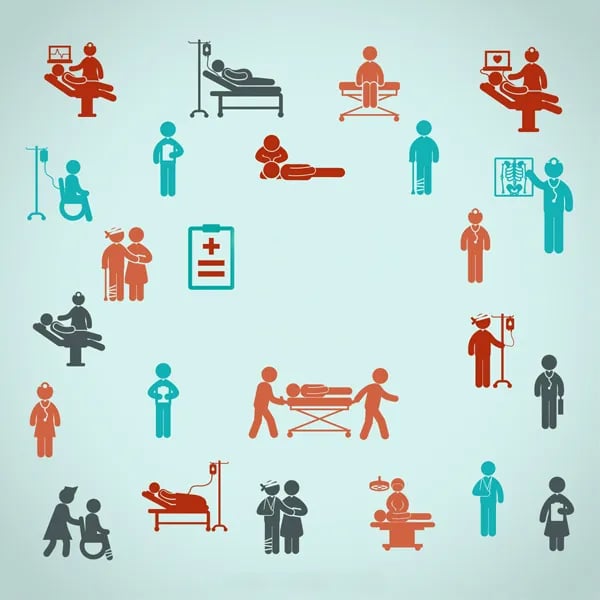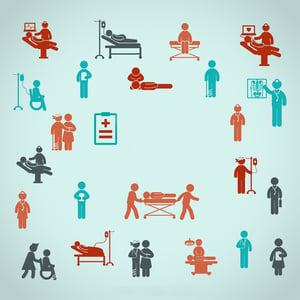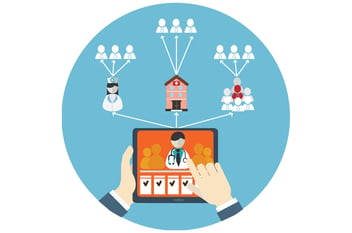From admission to discharge, patients have to go through streams of processes; many of which can be tedious and irritating. However, these processes can be streamlined for efficiency, the saving of time and, most importantly, patient satisfaction.

Discover 7 critical processes in hospitals that can be automated with workflow software.
Here are 7 hospital workflows that tend to be problematic or irritating for patients and how to fix them through workflow automation:
1. Admission Processes
In admitting patients, the back-office workflow admission process often has to go from desk to desk, which means longer wait time and more hassles for patients. Automating admission processes can save time, improve the patient experience and generally enhance effective operational procedures. Businesses rely on Process Owners and Managers to optimize operations and improve efficiency. A low-code approach makes workflow automation easier than ever.
2. Emergency Room Operations
To successfully complete ER processes, many hospitals have to go through overwhelming tasks. This is due to the fact that core processes have to be connected between the registration and check-in sections, ER physicians and specialists. If these processes are not streamlined, patients may end up waiting too long for treatment.
Business process management Software can assuage these challenges while helping hospitals streamline ER operations, allowing them to put patients first.
3. Transfers to Other Hospitals
Patients who need to be transferred may end up experiencing delays due to lack of a reliable workflow/collaboration system between hospitals, for inter-hospital and sub-acute care referrals and transfers. Hospitals can resolve this by using a process automation software, such as Kissflow, to automate their transfer processes and collaborate with each other seamlessly.
4. Medication Processes
Medication error is a major concern for hospital administrators. Patient safety is often contingent on correct and timely administration of treatment. With several medications at their disposal, health professionals may err in the type and dosage of medication administered. Workflow technology, when used well, can reduce medication errors significantly and enhance operational efficiency, while curbing financial losses caused by dosage and dispensing issues.
5. Medical Documentation
Taking and keeping patients’ medical records can be unwieldy both for patients and practitioners, let alone doing so manually. Automating this process improves patient care management due to its accessibility (anytime, anywhere), quality, improved accuracy, adaptability, less storage costs, and faster retrieval.
6. Supply of Drugs
Hospitals should have drugs easily available; but unfortunately, that’s not usually the case for some patients. By automating supply, storage and inventory of medication, errors and drug shortages would be minimized, thereby improving patient experience. Managing the supply process manually can lead to inefficient operations and unproductive utilization of time and resources.
7. Patient Flow
Delays in patient flow aren’t uncommon in hospitals. While bed availability and system capacity can determine patient flow, delays are often caused by process issues. These process issues may include inappropriate ward placement, delayed diagnosis decision, lack of consensus between ED and ward on appropriate inpatient admission, lack of bed availability due to delayed discharge of inpatients etc. Solve your workflow challenges with Kissflow and optimize your team's productivity.
These delays not only make patients feel frustrated, but also contribute to inefficiencies and wait times. As wait time increases, patient satisfaction drops. That said, this can be fixed by automating patient flow processes (ex. automating communications across departments). And, to do that successfully, you’ll need a dependable workflow automation software.














